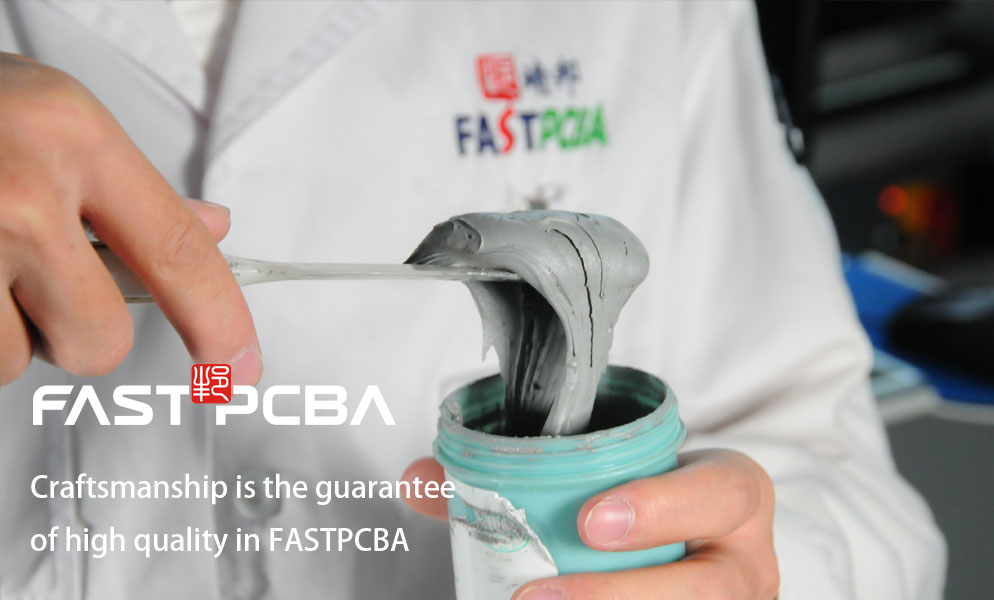
Main parameters affecting solder paste characteristics
date:Nov 29,2019
Return listMain parameters affecting solder paste characteristics
The main parameters that affect the characteristics of solder paste are alloy composition, flux composition, alloy and flux ratio, alloy powder particle size, shape and distribution uniformity, oxygen content on the surface of the alloy powder, viscosity, thixotropic index and slump.

1, Alloy composition, composition of flux and alloy solder and flux ratio
① Alloy composition, the alloy composition of solder paste is required to reach eutectic alloy or near-eutectic alloy as much as possible, which is conducive to improving welding quality.
② The composition of the flux directly affects the solderability and printability of the solder paste.
③ alloy and flux ratio. The content of the alloy in the solder paste determines the thickness of the solder after welding. As the percentage of the alloy increases, the height of the solder joint also increases. However, at a given viscosity, as the alloy content increases, the tendency of solder joint bridging also increases accordingly. With the decrease of the alloy content, the thickness of the solder joints after reflow welding decreases, and usually choosethe alloy content of 85% -90%.
The percentage of the alloy also directly affects the viscosity and printability of the solder paste.Generally, the percentage of the alloy is between 75% and 90%. The percentage of alloy used in no-clean solder paste and stencil printing process is higher, controlled at 89% or 90%, and the percentage of alloy used in drip coating process is lower, at 75% ~ 85%
2.Particle size, shape and distribution uniformity of alloy powder
The size, shape and uniformity of alloy powder particles are important parameters that affect the performance of solder paste, it affects the printability, demoldand solderability of solder paste. Fine particle solder paste has good printability, so for high-density, narrow-pitch products, because of the small opening size of the template, small particle alloy powder must be used, otherwise it will affect printability and demold.
(1) Particle size of alloy powder
The diameter of the commonly used alloy powder particles should be less than 1/5 of the opening size of the template. The size of the commonly used alloy powder particles is divided into 6 particle sizes. Usually 25-45um
The oxide content on the surface of the alloy powder should be less than 0.5%, and it is best controlled below 80*10-6
(2) Uniform distribution of alloy powder particles
The alloy powder should control the content of large particles and fine powder particles.The large particles will block the mesh and affect the printability. The excessively fine powder is liable to splash with the solvent volatilization during the pre-heating and reheating stage of the reflow solder, forming small tin beads.The fine powder should be controlled below 10%.
(3) Shape of alloy powder particles
The shape of the alloy powder particles is spherical and irregular (acicular, rod-shaped); the spherical area is small, the oxygen content is low, and the solder joint is bright, which is conducive to improving the welding quality. Spherical particles are generally used.
3. Viscosity
Solder paste is a thixotropic fluid with a certain viscosity, which can flow under the action of external force. Viscosity is the main characteristic index of solder paste, and it is an important factor affecting printing performance. The viscosity is too large, the solder paste is not easy to penetrate the template's leaks, which affects the filling and stripping of the solder paste. Pattern adhesion, solder joint bridging after soldering, the main factors affecting solder paste viscosity are as follows.
(1) Percent content of alloy solder powder
High alloy powder content and high viscosity; high flux percentage and low viscosity
(2) Alloy powder particles
The particle size of the alloy powder increases and the viscosity decreases; the particle size decreases and the viscosity increases.
(3) Temperature
As the temperature increases, the viscosity of the solder paste decreases; as the temperature decreases, the viscosity of the solder increases
4. Thixotropic index and slump
The thixotropic index refers to the property that the viscosity of a thixotropic fluid can decrease rapidly when external force is applied, and the viscosity can be quickly restored after stopping the external force. Solder paste is a thixotropic fluid. The slump of solder paste is mainly related to the viscosity and thixotropy of the solder paste. The thixotropic index is highand the slump issmall ,the thixotropic index is low and the slump is large.The main factors affecting the thixotropic index and slump are:
①The ratio of alloy solder to flux, that is, the percentage of alloy powder in solder paste;
②Thixotropic agent performance and added amount in flux carrier
③ Particle shape and size
5, Working life and storage period
Working life means that when continuous printing at room temperature, the viscosity of the solder paste needs to changelittlewith time, the solder paste is not easy to dry, and the printability (rollability) is stable. It is generally required to be placed at room temperature for 12-24h, at least 4h, and its performance remains unchanged. The storagelife refers to the storagelife of solder paste from manufacture to application under specified storage conditions without serious degradation, non-failure, and normal use.It is generally required to be stored at 2-10 ° C for one year, at least 3 to 6 Months.

